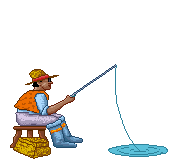FISHING FOR FLUENCY

Growing Independence and Fluency
By: Kallie Basden
Rational: Fluency is being able to read quickly, at an even pace using expression. This is an important skill to students to learn and it is necessary to become a great reader. Fluency helps make reading more efficient and makes it easier to read for understanding at a quicker and better pace. In order to become a fluent reader, lots of reading and re-reading decodable books, practicing decoding and decoding at a quick speed need to take place. This lesson calls for students to read decodable books over and over many times in order to be able to read them quickly and smoothly. Students will read the books independently and then be able to read to a peer.
Materials:
-
Poster with sentence: “Halloween is the best holiday!”
-
Book: “Pete the Cat: Pete at the Beach” by James Dean. HarperCollins, 2013.
-
Stopwatches
-
Paper and pencils to record time
-
Speed reading record sheets
-
Fishing fluency reading chart
Procedure:
-
Say: Today, boys and girls, we are going to work on reading faster and smoother all at the same time. This is called fluency. It is important that we learn to read quick and easily so that we can focus on what the words mean rather then breaking apart the word and figuring out how to pronounce it.
-
Say: I am going to model how to read a sentence fluently. Show the poster with the sentence on the board saying “Halloween is the best holiday!” Say: I am going to say the sentence aloud and I want you to listen how the sounds blend together so smoothly. Haaalllllooooowwwweeeeeeennn iiiiisssss tttthhhheeee bbbbeeeessstttt hhhhhoooollliiidddaaayyyy! I will then read the sentence faster than the time before and repeat. The last time, I will blend the words together and read the words at the same pace and smooth the words together in the sentence. Say: This is how we read fluently. When we read like this it is a lot easier to understand.
-
Say: Now it is your turn to practice reading fluently. Everyone find a place in the room to read and I will come and bring you a book to practice reading smoothly and quickly. Read it a few times because practicing will help improve your fluency. The book we are going to read today is “Pete the Cat: Pete at the Beach” by James Dean.
-
Booktalk: It is a hot summer day, and Pete the cat takes a trip to the beach with his mom and his brother Bob. Have you ever been to the beach? Well Bob’s favorite thing to do at the beach is to surf. He has a yellow and red surf board and was ready to get in the water as soon as they got there, but Pete did not wat to get in the ocean with him. Pete starts to get hot sitting on the beach, but he doesn’t want to get in the water with his brother… what do you think he will do to cool down? To see what happens, read the rest of “Pete the Cat: Pete at the Beach.”
-
Once everyone has had time to practice their book, we are going to all come back together and then split off again with a partner. I am going to give each group a stopwatch. You are going to time your partner for one minute and listen to them read. Once the minute is up, you are going to count how many words they read during that minute. I am also giving you a checklist that has a space to write down the number each round you and your partner read. You will each do it 3 times. Once one partner finishes their third round, the other partner will start and do the exact same thing.
-
During the peer assessment, I will walk around the room and monitor the students making sure they are following directions and doing their work correctly.
-
After everyone is done, I will meet with each student individually and explain what their numbers mean and what it has to do with fluency. I will have a chart to show each student a goal with a trophy at the end. In increments of 5, the chart will increase up to 85. I will put a mark on the corresponding number of words they read per minute and encourage them to keep practicing by moving their mark each time they increase their words read per minute.
Assessment: I will assess their speed reading by keeping their times documented and watching their improvement on the charts. I will also ask a few comprehension questions to assess fluency because fast reading without comprehension is not fluent reading. What season did this book take place? Who did Pete go to the beach with? Does Pete like the ocean? What was the weather like? What does Pete end up doing at the end of the book?
Reference:
Meri Hamilton: Fishing for Fluency
